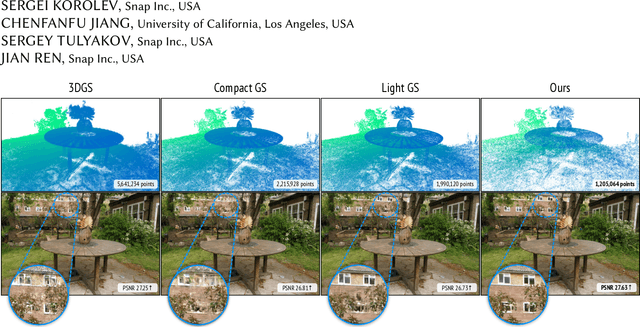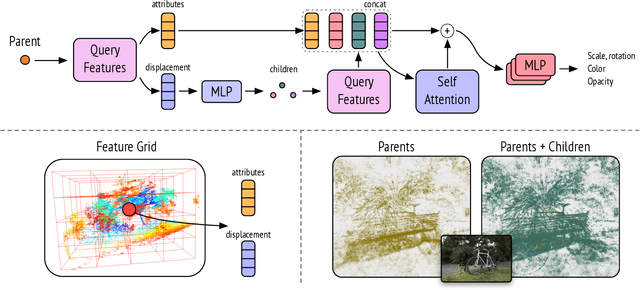Lightweight Predictive 3D Gaussian Splats
Paper and Code
Jun 27, 2024



Recent approaches representing 3D objects and scenes using Gaussian splats show increased rendering speed across a variety of platforms and devices. While rendering such representations is indeed extremely efficient, storing and transmitting them is often prohibitively expensive. To represent large-scale scenes, one often needs to store millions of 3D Gaussians, occupying gigabytes of disk space. This poses a very practical limitation, prohibiting widespread adoption.Several solutions have been proposed to strike a balance between disk size and rendering quality, noticeably reducing the visual quality. In this work, we propose a new representation that dramatically reduces the hard drive footprint while featuring similar or improved quality when compared to the standard 3D Gaussian splats. When compared to other compact solutions, ours offers higher quality renderings with significantly reduced storage, being able to efficiently run on a mobile device in real-time. Our key observation is that nearby points in the scene can share similar representations. Hence, only a small ratio of 3D points needs to be stored. We introduce an approach to identify such points which are called parent points. The discarded points called children points along with attributes can be efficiently predicted by tiny MLPs.
 Add to Chrome
Add to Chrome Add to Firefox
Add to Firefox Add to Edge
Add to Edge